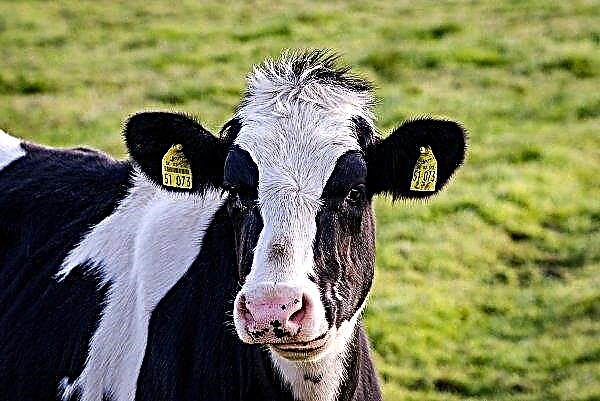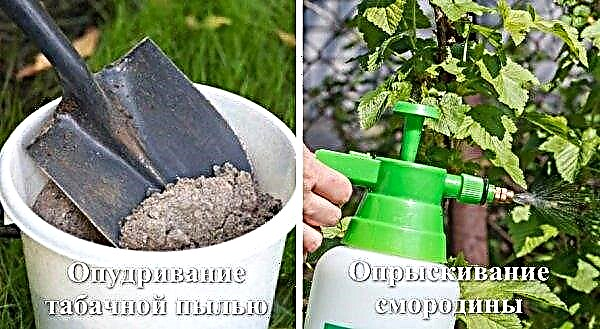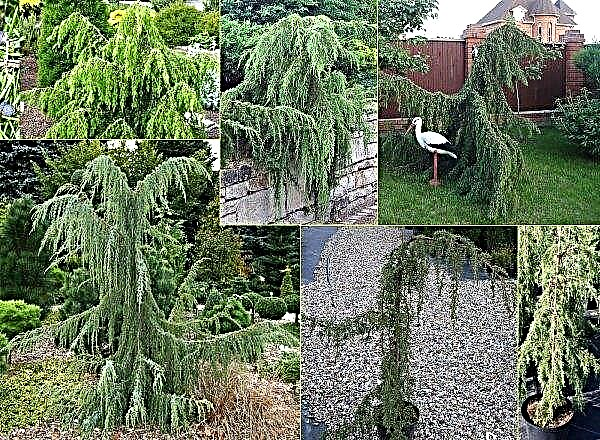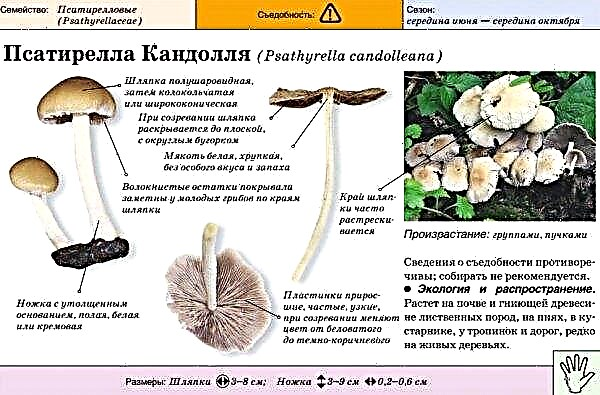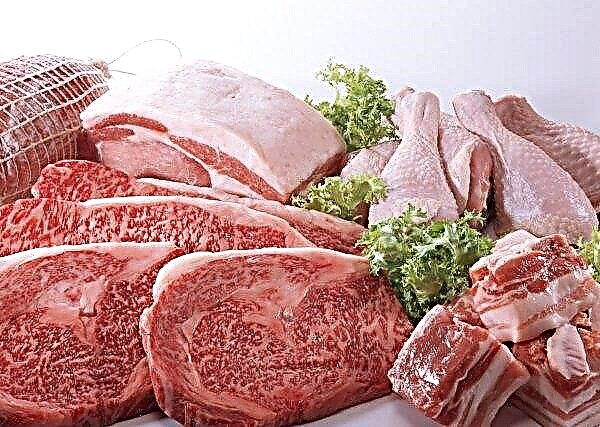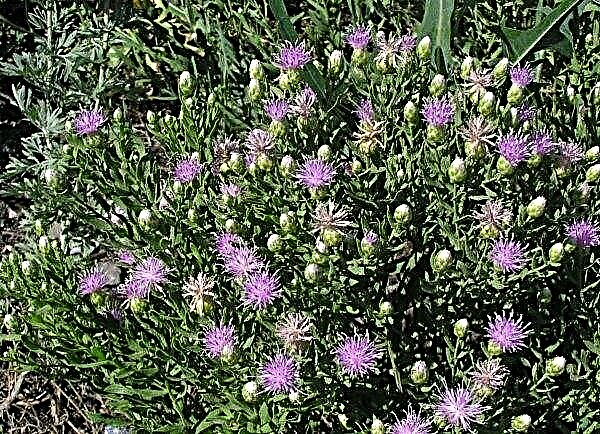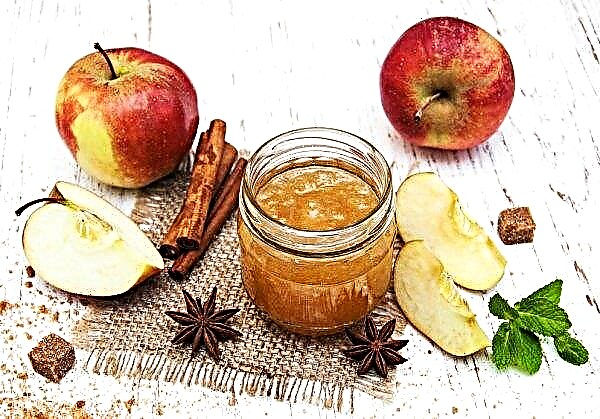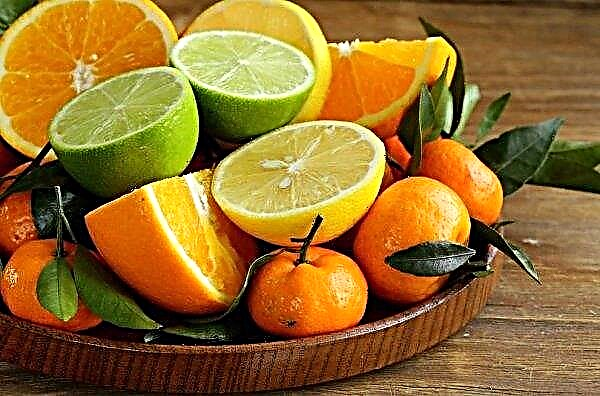The breed of black Australorp chickens does not unreasonably attract farmers who emphasize both egg production and the sale of meat. This bird is easy to keep at home, it is very cost-effective and unpretentious. But in order to grow a livestock healthy and profitable, it is important to properly maintain it, given the pedigree features.
History reference
Australorp was bred in Australia (with what its name is associated) in 1890. William Cook bred this breed by breeding with the participation of White Leghorns, Langshans and English Orpingtons. This genetic combination gave a good early maturity of a new species, excellent weight and an indicator of egg production.
Until 1922, interest in the breed was small, Australorps were popular only in the country of origin and the United States. But after the egg-laying black australorp was set in the world (1857 eggs from 6 laying hens in just a year), interest in these birds increased sharply.
The important point was that artificial lighting and stimulating compound feed were not used for these six champions.
The breed was introduced into the territory of modern Russia in 1946.
Description and distinctive features of the breed
Australorp black hens carry eggs even in winter, but high egg production is not the only goal of farmers. These chickens are often kept for meat due to its excellent weight and taste.
Both chickens and roosters quickly adapt to housing conditions and climate change. There is no problem with their temper, even if other breeds already live on the farm. Today, Australorpians are actively crossbreeding with other types of chickens, but without enough experience and knowledge, it is better not for lovers to conduct such experiments.
Of the successful examples - the Pushkin striped and Kuchin anniversary.
Important! To get a large number of livestock, Australorps are incubated. Although the hens of this breed themselves are excellent brood hens, they can bring 25-30 chickens during the summer season.
Australorp is not only black, but also black-motley, blue and even white are more common.
Appearance
The black Australorp standard is described in the table below:
| Appearance | Description |
| Color | Black feathers with a dark green tint, the fluff is almost black |
| Leather | Bright |
| Head | Medium sized, red face |
| Crest | Short, erect, leaf-shaped, 4 to 6 teeth |
| Lobes | Of red color |
| Eyes | Brown color |
| Beak | Short, black, strong |
| Neck | Medium length with rich plumage |
| Back | Evenly wide, plentiful lumbar plumage |
| Housing | Rounded |
| Chest | Powerful, bulging, wide |
| Stomach | There is a white-gray fluff |
| Wings | Firmly pressed to the body |
| Tail | Medium length, wide, 45 degrees to the back line |
| Paws | Dark gray, lighten down |

Character
A big plus in the character of Australorps is poise. These are hens without aggression, they get along well with representatives of other breeds. Do not conflict with each other, friendly to the owners. Adapt to individual, herd and even cellular content.
The versatility of the species brings virtually no worries in the household.
Advantages and disadvantages
- Key advantages of Australorps:
- picky about food;
- do not require special care;
- excellent meat quality;
- a high rate of egg production;
- easy adaptation to the environment;
- peaceful disposition;
- can be used in breeding.
- The disadvantages of the breed:
- breeding work with the breed is very difficult - hybrids are less than purebred birds;
- it is difficult to get a purebred bird in Russia, and when delivered from abroad and the climate changes abruptly, the mortality is high.
Content Rules
These birds do not have high requirements. Their adaptability is high, but the conditions should be favorable for chickens. Do not allow humidity in the room - this leads to illness and death. The litter should be regularly changed and selected in such a way as to reduce the risk of the growth of microorganisms dangerous to autorrhps.
Bird house
The house is being equipped at the rate of 1 sq. Km. m for 4 birds. The floor is covered with bedding, which should be dry all the time. The optimum temperature in the chicken coop is + 12–15 ° C. To maintain this temperature in winter, you will have to prepare heaters. The lighting regime for adult Australorps is 14–15 hours a day. In winter, due to the short daylight hours, additional lighting is required.
The lighting regime for adult Australorps is 14–15 hours a day. In winter, due to the short daylight hours, additional lighting is required.
There should be comfortable perches in the house. Long, durable stubs are suitable, but to prevent the hens from getting dirty each other, it is better to choose the bars and place them not one above the other, but in the form of a ladder. Access to food and water should be free.
The size of one nest is 60–70 cm in length and 50 cm in width. Dry straw is laid inside.
Care
Due to non-compliance with sanitary norms, Australorps begin to get very sick, so pay special attention to the rules for caring for this breed of chickens. First of all, this concerns vaccination of chickens from Newcastle and Marek diseases.
The house should be regularly cleaned with disinfection of the premises and equipment. Bowls and drinking bowls are washed with chlorhexidine or hydrogen peroxide. The litter needs to be changed as it becomes dirty, taking care of its dryness.
If this is not done, pathogenic bacteria and insects, which are carriers of dangerous viruses, will multiply. Peat is best suited as a litter: it also retains heat and absorbs moisture. You can also use dry straw, sawdust.
General cleaning is carried out once every six months with the treatment of the floor, walls, ceiling, perches. The house also needs to be aired without creating a draft.
Did you know? On average, one laying hen can lay 250–300 eggs per year.
Open access organize baths made of wood ash and fine sand in a ratio of 1: 1. This is important for the formation of a protective layer on the feathers of Australorps and their protection against parasites.
Walking patio
To increase productivity, as well as to enable the chickens to receive the missing trace elements, it is recommended to organize a fenced walking yard for them. Australorps have good plumage and fluff, so they can walk even in winter not in very severe frost. They do not have an effect on egg laying.
The area of the mesh enclosure depends on the number of individuals. It is better to equip it from the south side of the house. Australorps are heavy and do not fly high, so they do not require too high fencing. The temperament of chickens is calm, so they are not inclined to shoots either.
Inside the walking yard there should be feeders and drinking bowls, as well as bathtubs with ash and sand for bathing. Do not forget about the canopy, which will protect the birds from the sun on hot days.
Feeding troughs and drinking bowls
Food and water should be freely available for Australorps, so calculate the number of feeders and drinkers according to the number of livestock. Good feeders are long, moderately wide, but so that the chickens do not fit into them and do not jump.
Please note that feeders should not have sharp edges. Drinkers choose a closed type so that the bird does not splash water on the floor. This is not only convenient, but also will not cause dampness in the house.
It is recommended to hang feeders and drinking bowls so that hens do not trample on them and do not turn over.
At least once a month, containers for food and water, as well as for bathing, need to be washed and disinfected.
Moult and egg laying break
The consequences of seasonal molting spoil the salable appearance of the Australorp carcass - dark pads remain on it. But this applies to hens only with a dark color. Often, farmers let the bird slaughter immediately after molting.
On the other hand, during this period, laying hens do not reduce their productivity like some other breeds, that is, they will lay eggs in the same quantity and of good quality.
Herd replacement planned
Australorps remain most productive for a year after puberty. By two years, egg production is reduced, so you have to think about the timely replacement of the herd.
Did you know? Chickens, it turns out, have a very good memory. They can remember up to a hundred objects, including people.
If you want to engage in breeding, one bird family should consist of 10-15 laying hens and one rooster. A good male can be used even for more than five years, unlike chickens. You can keep more than one family in the house, but in this case, roosters will periodically fight with each other.
What to feed
Chickens of the Australorlp breed perfectly absorb almost any food, they can be called omnivorous. But the diet should be of high quality, since egg laying depends on it. If the food is unsatisfactory, the laying hens will lack useful elements, because of which the quality of the shell will suffer: it will either be too thin, or it will not be at all.
If the food is unsatisfactory, the laying hens will lack useful elements, because of which the quality of the shell will suffer: it will either be too thin, or it will not be at all.
Chickens
The feeding of Australorp chickens begins with grated boiled egg yolk with the addition of ground grains. If the newborns are weakened, drop them and feed them with the milk mixture with chicken yolk.
Important! Moderately dose lighting for Australorp chicks - excess light will lead to their accelerated growth, and this will reduce their reproductive abilities in the future.
If it is impossible to equip the young stock (it should be separate from the adult walking), the chicks must be given fish oil at the rate of 0.1 g per individual.
From the 10th day of life, wheat bran is added to the feed of young animals. It also helps to add boiled root vegetables (potatoes, carrots, beets), chopped beef. Later, grown chickens are recommended to give shredded greens (onion stems, parsley), feed, corn.
Adult chickens
Adult chickens Australorpians eat the same as livestock of other breeds.
It is necessary to feed them:
- cereals (wheat, corn, millet, barley);
- boiled peeling of beets, carrots, potatoes (without processes);
- fresh herbs;
- boneless fish waste;
- dairy products;
- dried eggshell;
- coarse sand (for grinding food in the stomach).
 In winter, beet pulp, silage, grass meal should be in the diet. Remember the essential mineral supplements: ash, small shells, bone meal.
In winter, beet pulp, silage, grass meal should be in the diet. Remember the essential mineral supplements: ash, small shells, bone meal.Since purebred Australorpians are not so easy to buy in Russia, black-motley birds are more common in the state. Buying young animals and eggs for incubation is better only from trusted breeders, so that subsequently grown Australorps you pleased with their high productivity.


